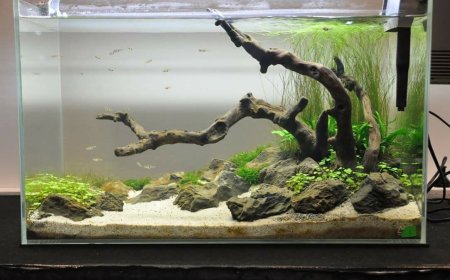Biosurfactants: Nature's Powerful Surface-Active Molecules
Biosurfactant
Biosurfactants are remarkable molecules produced by living organisms that reduce surface tension between liquids, solids, and gases. These natural surfactants are created by microorganisms like bacteria, yeast, and fungi as part of their metabolic processes. Unlike synthetic surfactants derived from petroleum, biosurfactant offer an eco-friendly alternative with superior biodegradability and often enhanced performance.
What Makes Biosurfactants Special?
These biological molecules stand out because they:
-
Lower surface tension between different phases (oil-water, air-water)
-
Form stable foams and emulsions
-
Function effectively under extreme conditions (high temperature, pH, salinity)
-
Are biodegradable and generally non-toxic
-
Can be produced from renewable resources
Major Types of Biosurfactant
Scientists classify biosurfactant based on their chemical structure:
-
Glycolipids(e.g., Rhamnolipids, Sophorolipids, Trehalolipids)
-
Sugar molecules linked to fatty acids
-
Excellent emulsifiers with antimicrobial properties
-
-
Lipopeptides(e.g., Surfactin, Iturin, Fengycin)
-
Amino acids connected to fatty acid chains
-
Powerful antimicrobial and antiviral capabilities
-
-
Fatty Acids & Phospholipids
-
Natural components of cell membranes
-
Used in food and cosmetic industries
-
-
Polymeric Biosurfactant
-
Large molecular weight compounds
-
Effective in environmental remediation
-
-
Particulate Biosurfactant
-
Membrane vesicles that act as surfactants
-
Emerging applications in nanotechnology
-
How Microorganisms Create Biosurfactant
Microbes produce these molecules through complex biochemical pathways:
-
Carbon Source Utilization: Microbes break down oils, sugars, or waste materials
-
Biosynthesis: Enzymatic assembly of lipid and sugar/protein components
-
Secretion: Release of finished biosurfactant into the environment
The production can be optimized by controlling:
-
Nutrient composition
-
Oxygen levels
-
Temperature and pH
-
Fermentation time
Why Biosurfactant Outperform Synthetic Versions
Compared to chemical surfactants, biosurfactant offer:
?Better environmental compatibility- Rapid degradation, low toxicity
?Higher specificity- Can be tailored for particular applications
?Broader functionality- Often exhibit antimicrobial, anti-adhesive properties
?Renewable production- Made from sustainable feedstocks
?Stability under extreme conditions- Many work in high heat, salt, or pH environments
Cutting-Edge Applications Across Industries
Environmental Remediation
-
Oil spill cleanup (marine and terrestrial)
-
Soil washing for contaminant removal
-
Wastewater treatment
Healthcare & Medicine
-
Antimicrobial and anti-biofilm agents
-
Drug delivery systems
-
Wound healing formulations
-
Anti-cancer therapies (some show tumor-inhibiting properties)
Personal Care & Cosmetics
-
Mild, skin-friendly cleansers
-
Natural emulsifiers in creams and lotions
-
Anti-acne formulations
Food Industry
-
Emulsifiers in dressings and baked goods
-
Anti-adhesive coatings for food processing equipment
-
Edible film components
Agriculture
-
Biopesticide additives
-
Soil conditioners
-
Plant pathogen control
Industrial Processes
-
Enhanced oil recovery
-
Metal extraction and processing
-
Textile manufacturing
-
Paper and pulp processing
Production Challenges & Solutions
While promising, biosurfactant production faces hurdles:
-
Cost Factors:
-
High fermentation expenses
-
Downstream processing costs
-
Current low production yields
-
-
Technical Challenges:
-
Strain optimization
-
Process scale-up difficulties
-
Product purity requirements
-
Innovative Solutions:
-
Using waste streams as low-cost substrates
-
Genetic engineering of producer strains
-
Improved fermentation technologies
-
Novel extraction methods
The Future of Biosurfactants
Emerging trends include:
-
Tailored biosurfactantsdesigned for specific industrial needs
-
CRISPR-engineered microbesfor enhanced production
-
Circular economy approachesusing agricultural/industrial waste
-
Nanotechnology integrationsfor advanced applications
-
Medical breakthroughsin infection control and drug delivery
As sustainability becomes increasingly important, biosurfactants are poised to replace many conventional surfactants, offering comparable or superior performance without the environmental drawbacks.
Conclusion
Biosurfactant represent a fascinating convergence of biotechnology and green chemistry. These natural molecules offer sustainable solutions to numerous industrial challenges while minimizing environmental impact. As production methods improve and costs decrease, we can expect biosurfactants to play an ever-growing role in our transition to a more sustainable future across multiple industries. Their unique combination of effectiveness, environmental safety, and versatility makes them one of the most promising classes of biomolecules for the 21st century.




































